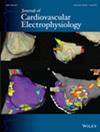Safety Reporting in Trials on Atrial Fibrillation: An Observational Study of ClinicalTrials.gov Registry and Corresponding Publications
Abstract
Background
Adverse events (AE) in clinical trials should be reported fully and transparently as inconsistent reporting endangers patients and can lead to incorrect conclusions about medical procedures. Atrial fibrillation (AF) is a highly prevalent disease with different therapeutic options available. With an increasing incidence of AF, potential AEs are important factor in the choice of treatment. The aim of our study was to assess the completeness of AE reporting for the registered trials of interventions for AF treatment in a clinical trial registry and the consistency of their reporting in corresponding publications.
Methods
This was an observational, cross-sectional study of clinical trials of AF registered in ClinicalTrials.gov, as well as of corresponding publications.
Findings
Out of 340 registry items retrieved by our search, 130 items reported on the treatment of AF, and 75 corresponding publications were identified (39.2%) and included in the analysis. Both number of serious AEs (SAE) and other AEs (OAE) as well as the number of patients affected were underreported in corresponding publications when compared with trial registry. For trials reporting nonpharmacological interventions (e.g., medical devices and procedures) there was a higher number of discrepancies in the number of SAEs and the number of patients affected, and information on SAEs or OAEs were more often omitted from publication.
Interpretation
The reporting of AEs in AF trials is inconsistent and incomplete and presents a serious problem for patients' safety. Inadequate reporting raises concerns for the credibility of trials results as well as for clinical practice guidelines and justifies the calls for improvements in reporting and regulations of clinical trials of interventions for AF.

 求助内容:
求助内容: 应助结果提醒方式:
应助结果提醒方式:


